Pope Francis has put a “church of the poor” front and center. How should First World Christians respond to his invitation and challenge?
Roberto S. Goizueta, the prominent Boston College theologian, has taken a path that in many ways is quite different from his father, Roberto C. Goizueta. As CEO of the Coca-Cola Company, the elder Goizueta, a Cuban immigrant, was famous for the innovative global marketing skills with which he transformed the soft drink giant.
But despite their differences, the theologian says he learned a lot from his father. “One of the things I learned from him was precisely the importance of not being afraid to take risks and to think differently. That was one of the reasons for his success. My father was able to think globally at a time when people were not thinking globally.”
Another lesson, Goizueta says, comes from his father’s intellectual humility. “He surrounded himself with people who didn’t replicate him but who complemented him and at times challenged him.” To the theologian it has become crucial to understand those who are different as offering possibilities for growth and for understanding ourselves, the human condition, and God in new and unexpected ways.
Goizueta, who is one of the country’s leading Hispanic theologians, refuses to do theology in an academic ivory tower. In his writing he generously shares his own “halting and ongoing attempt to unpack the implications of the inspiring yet demanding statement, ‘God loved us first.’ . . . Through our everyday actions, [we must] respond to Christ’s claim to be the way, the truth, and the life by embodying that claim in our actions.”
In his first few months as pope, Pope Francis has been advocating for a church of and for the poor. What does this mean for the church?
I am very hopeful about what this means for the future of the church. First, it reflects a recognition of the fact that the Catholic Church is now a church that is predominantly a Third World church, a church whose vitality and center of gravity is in Africa, Asia, and Latin America. Pope Francis has articulated very forcefully that the church today is predominantly a church of the poor.
When we talk about a church of the poor, we are not talking about some small minority but about the vast majority of Christians in the world today. It is First World Christians, those of us who are privileged and comfortable, who are a small minority in the Catholic Church.
Pope Francis has renewed an emphasis on the gospel being good news for the poor. In that regard the pope represents both a source of hope and a challenge to the church, to all of us, to embody in our own lives and actions what we claim to believe as a community, as a church, and as individuals.
How do you see it as a source of hope and a challenge for us?
It is a source of hope because it is a reminder of the fundamental good news that in the person of Jesus Christ we have been reconciled to God, through God’s own extraordinary self-gift of love.
We are reconciled, we are loved—that is the fundamental message of the gospel. And in a special way, God’s presence among those persons who are not loved in the world, who have been marginalized, ostracized, excluded, and discarded, that presence is an assurance that God loves us all equally and freely, regardless of any merit we may have.
That fundamental good news that we are not abandoned is a message that this pope brings. It is a message that was brought by his namesake, St. Francis of Assisi, and one that is brought by the poor among us and by those whom we, through our own sins, have abandoned.
At the same time that represents a challenge for us to live out of gratitude for God’s mercy, for God’s acceptance and reconciliation, to live that out in the way in which we treat those who are abandoned in the world today.
So what is called the preferential option for the poor is then something we undertake not out of a sense of duty, but out of a sense of gratitude for the extraordinary gift of God’s love. The way we receive that gift is precisely through the way we share it and live it out in those places where Jesus Christ has said he is present in a special way.
In some of his statements, Pope Francis has rather bluntly criticized capitalism’s “cult of money.” Is he issuing a particular challenge to First World Christians here?
Pope Francis has simply been underscoring—and has brought to the center of his message—the great tradition of Catholic social teaching, which begins with the assertion that we are all God’s children and that all of us have a dignity that derives from that filial relationship.
According to Catholic social teaching, any society or any system that instrumentalizes human persons or that attaches value to them solely by what they produce or by what they consume is a fundamentally materialistic and atheist system. It is un-Christian, regardless of what it may claim to be nominally. And the causes of poverty therefore are not simply bad persons but bad systems or structures that promote, encourage, and reward certain forms of behaviors over others.
The pope’s focus on the poor, along with his roots in Latin America, has brought new attention to liberation theology. What are Pope Francis’ connections to and differences with liberation theology?
First, we need to clarify which liberation theology we are talking about. There are many different liberation theologies. Even the two documents from the Vatican’s Congregation for the Doctrine of the Faith that in the 1980s criticized some forms of liberation theology insisted that a theology of liberation is at the heart of the gospel. So the debate is not about liberation theology but about how to understand liberation theology.
It is perfectly understandable and appropriate that, when he was in Argentina, the current pope distanced himself from and opposed certain forms of liberation theology, particularly those that would endorse violent revolution. But at the same time, his words and his actions consistently identified him with the poor in a way that is consonant and in sync with liberation theology.
The fundamental insight of liberation theology is the preferential option for the poor, and that’s an insight that has now become part and parcel of Catholic social teaching and is cited over and over again in official Catholic documents. I don’t think there is any doubt that this pope affirms and believes in the preferential option for the poor.
What does that preferential option for the poor look like in practice?
The preferential option for the poor is simply the attempt to read the gospel and to understand God from the perspective and through the eyes of the poor. Not because the poor themselves are any better than the rich, but simply because God is identified in a special way with the poor in the person of Jesus Christ.
There are many gospel passages that attest to that, the most obvious being Matthew 25, where Jesus Christ is directly identified with the poor. If Jesus says he has come not for the privileged, the comfortable, and the wealthy but for the sinner, the outcast, the prisoner, the hungry, and the naked, then it is up to us, if we claim to know that Christ, to look for him where he himself has said he can be found.
Making a preferential option for the poor means that in one way or another we enter into solidarity with the marginalized, those in our world who, in the words of Jon Sobrino, cannot take life for granted, those who do not know if they will have food on their tables tomorrow.
Sobrino and other Latin American liberation theologians talk about hearing the cries of today’s “crucified people.” Christ continues to be crucified in the world today among those people who themselves are being crucified. To the extent that we enter into solidarity with them, we enter into solidarity with the crucified Christ.
What Christ represents for us, or ought to, is much more than simply a model to be followed or to be imitated, although Christ certainly is that. In Christ, God invites us to enter into and to participate in God’s own trinitarian life. What a wonderful, astounding invitation.
But where is God being found? For Christians, the significance of the crucified and risen Christ is precisely that God is found, in some special way, among those people who continue to be crucified today: the poor, the hungry, the naked, and the outcast. That’s where we have to go looking to unite ourselves with the Christ who is present there.
How can parishes help American Catholics live out such a preferential option for the poor?
At the heart of the preferential option for the poor is not simply working for social justice, although it necessarily includes that. It starts with simply being with and developing friendships with poor people.
Until we can be with and accompany the victims of society, we cannot ultimately work for justice. Otherwise, we impose our own needs on them. The Peruvian liberation theologian Gustavo Gutierrez is fond of saying that the option for the poor demands friendship with the poor.
Otherwise the poor become an abstraction. The starting point for working for justice is simple presence with, compassion for, solidarity with poor persons.
I’ve seen it in a number of parishes in Boston and Chicago, where they regularly send groups to the inner city, to the border, to Mexico, or to Central America and establish connections with those communities. Other parishes, rather than going out, are bringing the poor in—through establishing soup kitchens or distributing clothing—to reduce the sense of isolation of the parish from the world in which it is located.
And it also plays out increasingly within parishes themselves. Today many parishes are welcoming groups of immigrants who may be different economically and racially from the parish’s previously predominant population. They are learning, some better than others, to see that contact and pluralism not as a threat but as a source of hope and as enriching for their faith.
They are beginning to see the immigrant as a messenger of Christ, who is himself the stranger who approaches us in unexpected ways.
Is it more difficult for comfortable, middle-class Americans to embrace the preferential option for the poor?
My concern is that what drives most of us middle-class and wealthy Americans is fundamentally an obsession with security and control.
In our obsession with creating lives that are fully controlled, invulnerable, and completely secure, we isolate ourselves from those in our society who are vulnerable, powerless, and poor. Not because we hate them, but because the poor remind us that, ultimately, we’re all going to die and our lives are not in our control.
We don’t want to see those people. We put them in institutions. We put them on the other side of the tracks. We get them off our streets. We live our lives in this state of fear that if somebody just scratches the surface, we will have to confront our own vulnerability.
The point and the challenge is to break down those barriers that we’ve established between parishes and communities. If you were to boil down Jesus’ ministry to one statement, it is that Jesus broke down borders and barriers. Ultimately, that’s why he was crucified.
He was crucified because he hung out with the “wrong” people—with sinners, with prostitutes, and with tax collectors. Although not explicitly a political act, it is nevertheless in some ways the most radical political act because it completely overturns people’s expectations and assumptions about who we are as a society and who God is.
In following Jesus, then, we are challenged in our own society to break down the barriers that we have set up between ourselves and the sinners, prostitutes, and tax collectors. We need to reach out to them, not only for their good but for our own, to be liberated from our obsession with security, control, and power, to yield ourselves to the God in whose hands we exist and live and can thrive. It’s liberation for all of us.
We’re all in this together. As Martin Luther King Jr. used to say, “As long as one black person is enslaved, we’re all enslaved.” We need to understand that intrinsic connection between our own well‑being and the well‑being of all people.
Furthermore, as we already discussed, there is a theological and spiritual connection because this is where God is present, where Christ is present. If we claim to know and believe in Christ, this is where we have to place ourselves.
How did you first discover this in your own life?
One of the places where I discovered that is in the beautiful popular religious practices of the Latino community. One that I’ve been involved in and have written about is the Good Friday processions that include reenactments of Christ’s passion. I remember participating for the first time in the via crucis at the San Fernando Cathedral in San Antonio.
I went in assuming that this was going to be a very depressing experience, a bit uncomfortable with the focus on Jesus’ crucifixion: Why would you want to emphasize the crucifixion when you’ve got Easter around the bend?
I soon learned that I was very sadly mistaken. As I accompanied the people—and Christ—on the via crucis, I experienced a real sense of hope among the people that seemed paradoxical in that context. I realized that what gave birth to that sense of hope was the fact that we were doing this in common. Christ was with us, and we were with him.
In a sense it’s just a ritual. It’s not going to lead to anything. It’s not going to transform society. But it generated the kind of hope that is a foundation for and a precondition for any real, effective social change.
Did people connect their own suffering with that of Christ, or was it more an unspoken kind of feeling of community with Christ?
Usually, it’s unspoken, on a kind of affective level, but other times it’s explicit. Latinos also have the ritual of the Pésame on Good Friday, during which we stay with a statue of Mary and remember her suffering during Jesus’ crucifixion and burial.
A lot of the women of the parish would come up and explicitly identify themselves with Mary and say, “I know what you’re going through, having lost your son. I lost my son to drugs.” Or, “I lost my son to gang violence.” They would share all sorts of amazing stories of their own suffering and how they identified with Mary and her suffering.
Again, there is nothing explicitly political about it. But it’s a place where people can share their tears with Jesus and with Mary. That is, again, a necessary precondition for the kind of empowerment and hope that can ultimately bring about change.
Even the ability to cry, to shed tears, is a way of saying, “I’m not an object. You can’t mistreat me. I am a human being.” And it is a statement of protest and opposition to a society that tells you, “Oh, get over it. It must be your fault that you’re not strong enough.”
That is the basis of any kind of liberation or work for justice: the affirmation, the belief, and the conviction that “I am a human being.” That is what Jesus Christ’s presence with the poor reveals to them.
And that is also what Our Lady of Guadalupe’s encounter with the indigenous Juan Diego reveals to them. “Yes, I am not alone. Yes, I am beloved of God. Yes, I am a human being.”
And, by the way, neither is Jesus alone. The theologian Father Virgil Elizondo tells the story of how, in the late 1960s in the church he was working at, the statues of saints had been taken out. After the Second Vatican Council there was a push for a simpler church architecture that led to the removal of saint statues; the only thing left was a crucifix behind the altar.
After Mass one day, this old lady comes out, looking very sad. He asks her, “Señora, why are you looking so sad?” She looks at him and says, “I know that Jesus is the most important, but that doesn’t mean he has to be all alone.”
That’s why there is such a strong Marian devotion and a strong devotion to saints. Jesus is at the head of the community, but it is a community, and Jesus himself is also formed by that community, which extends through generations. To participate in Christ’s life is to participate in the community, which itself has given birth to Christ.
This article appeared in the August 2013 issue of U.S. Catholic (Vol. 78, No. 8, pages 26-30).
Read more about Latino devotions from Roberto Goizueta in “Embracing Latino popular devotions.”
Image: Flickr photo cc by Catholic Church England and Wales


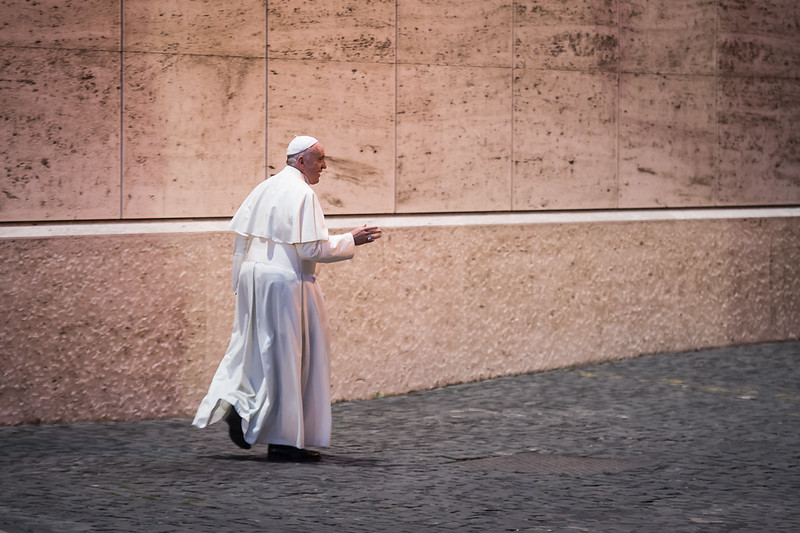

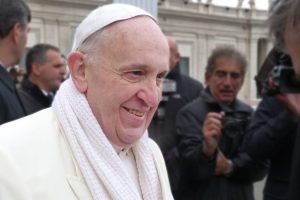

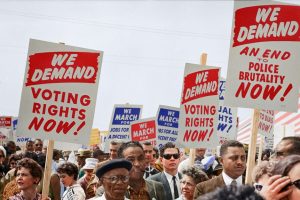




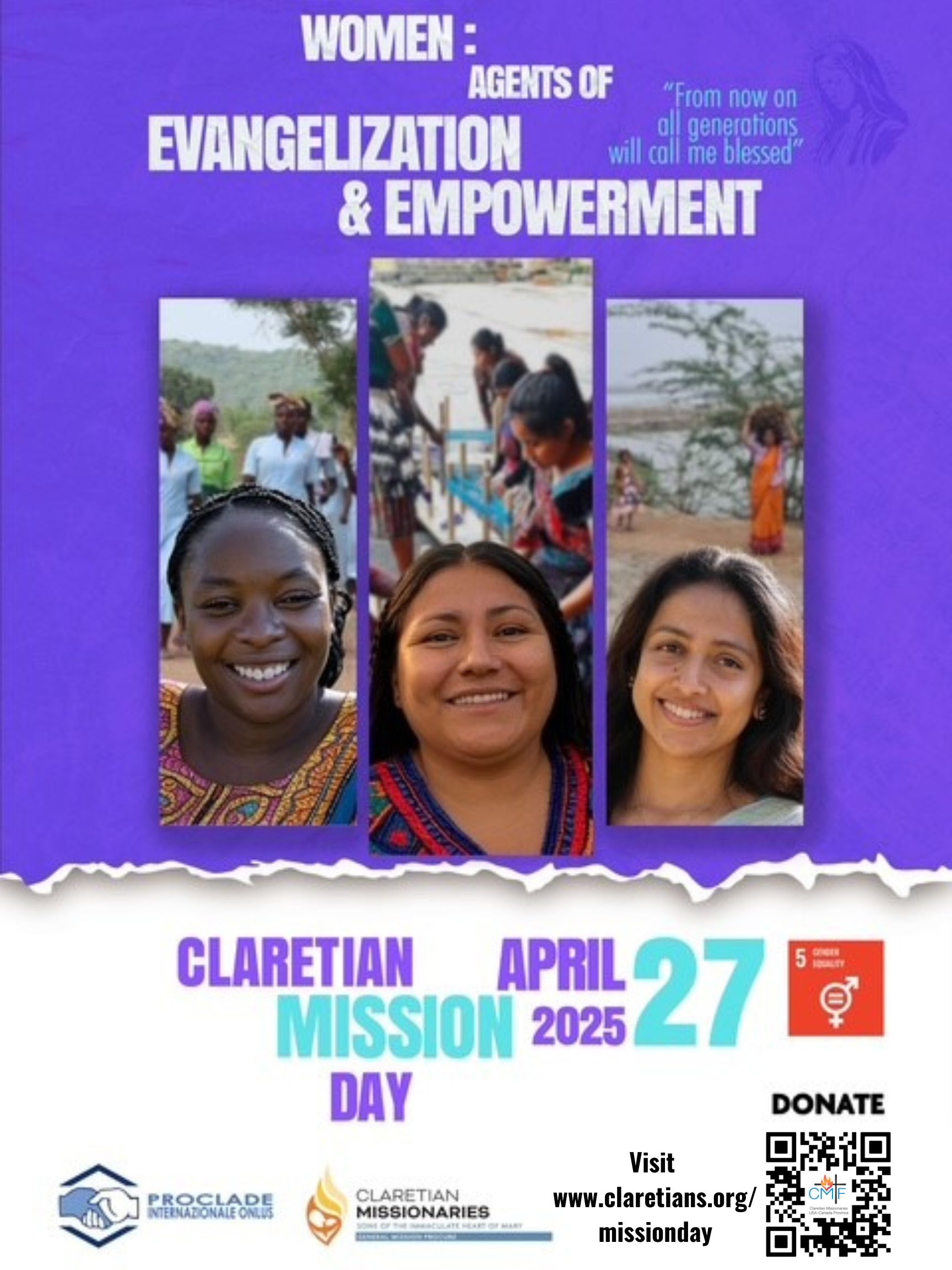
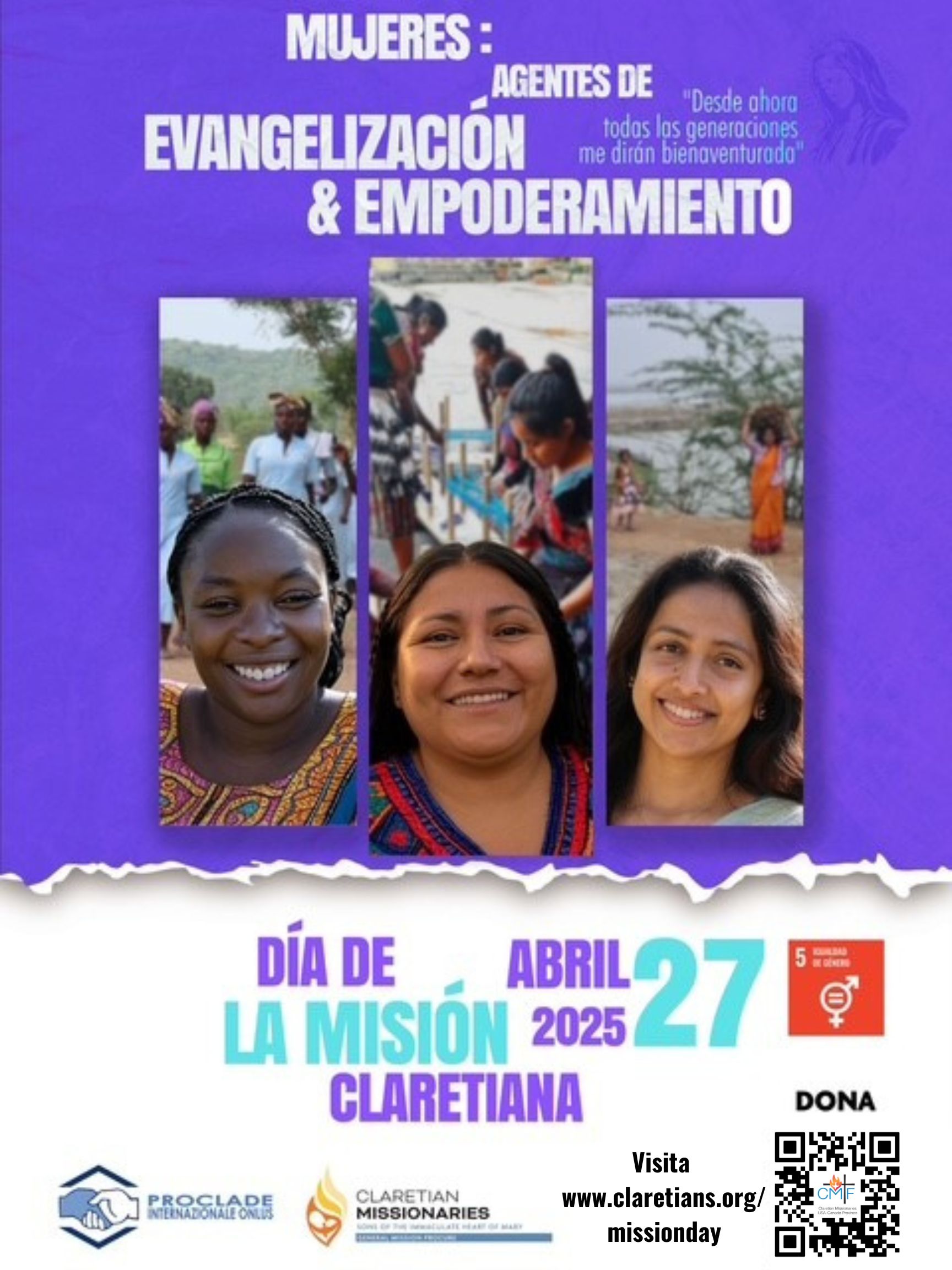
Add comment